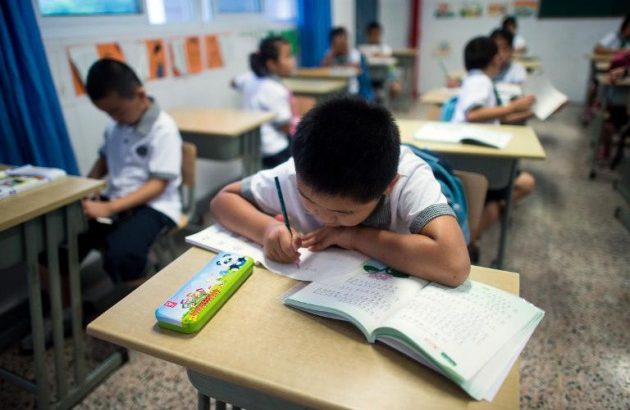Japón/Marzo de 2017/Fuente: The Japan News
RESUMEN: A medida que los Juegos Olímpicos y Paralímpicos de Tokio de 2020 se aproximan, todas las escuelas públicas de Tokio han comenzado a adoptar contenidos educativos para ampliar el atractivo del valor de los deportes y alentar la comprensión mutua. Esta empresa, conocida como «educación olímpica y paraolímpica», tiene por objeto no sólo fomentar la educación deportiva, sino también animar a los estudiantes a aprender más sobre la cultura tradicional japonesa, con el objetivo de promover la hospitalidad japonesa omotenashi. Por ejemplo, a principios de febrero, se llevó a cabo un evento para permitir a los estudiantes disfrutar de la narración cómica de rakugo en el gimnasio de la escuela secundaria metropolitana Yamasaki de Tokio en Machida, Tokio.
As the 2020 Tokyo Olympic and Paralympic Games approach, all public schools in Tokyo have begun to adopt educational content to broaden the appeal of the value of sports and encourage mutual understanding.
This undertaking, referred to as “Olympic and Paralympic education,” is intended not only to further education on sports, but also to encourage students to learn more about Japanese traditional culture, with the aim of promoting omotenashi Japanese hospitality.
For example, in early February, an event to allow students to enjoy rakugo comic storytelling was held at the gymnasium of Tokyo metropolitan Yamasaki High School in Machida, Tokyo.
Students sat in rapt attention as a rakugo storyteller in kimono seated on the stage performed. He formed the shape of a sake cup with his hands and mimicked the act of drinking it dry.
About 450 first- and second-year students took part in the event. Members of a rakugo study group at the private J.F. Oberlin University in Machida performed classical rakugo stories including “Kinshu Banya” (literally, guardhouse where drinking is banned). The students also practiced audience etiquette for rakugo performances, such as exaggerated laughing and clapping.
The rakugo stories included some words perhaps unfamiliar to high school students, such as “goinkyo” (retiree) and “banya” (guardhouse), but the students reacted with delight and laughter when the performers mimicked the comical actions of a drunken man.
Natsumi Ota, a student who took part in the event, said: “This was my first time to see rakugo and it was so interesting. I think it is easier to get a message across using gestures when explaining Japanese culture to foreigners.”
She said she had gained a vital clue as to how she should express what she wants to say.
In Tokyo, all public schools from kindergarten to high school will conduct education programs related to the Olympic and Paralympic Games, with a total of 35 class hours scheduled per year.
There are 100 schools designated as key schools for actively introducing Olympic and Paralympic education in their classes. They are each assigned research projects by the Tokyo Metropolitan Board of Education.
Of the 100 schools designated as key schools, Yamasaki High School is one of only five key high schools.
The research theme to which they have been assigned is “sports-oriented popularization and expansion.” The school also attaches importance to research on Japanese traditional culture.
“We are taking another look at the things that make Japan special and trying to encourage students to learn about the spirit of omotenashi,” said Deputy Principal Toshihiro Yamamuro.
In addition to rakugo, the school’s students have watched eisa, a traditional dance performance from Okinawa Prefecture, iai, a martial art using Japanese swords, and shodo calligraphy in the form of a performance show.
“If different approaches to conventional forms of education, including volunteer and cultural activities and outings are encouraged, I believe this could lead to good educational outcomes relating to the Olympic and Paralympic Games,” said Principal Tadashi Yamamoto.
Among other key schools in Olympic and Paralympic education, there are those that will focus on introducing traditional culture.
In October last year at Narihira Elementary School in Sumida Ward, Tokyo, sixth graders interviewed foreign tourists in English while displaying otedama beanbags and other Japanese toys at Tokyo Skytree in the ward.
The key schools have promoted their respective education efforts closely tied to local communities.
An official in charge at the metropolitan board of education said: “Reconsidering Japanese culture and its essential points can help us gain an appreciation for other various value sets. We’d like to see the education program for the Olympics and Paralympics expand to all other parts of the nation, to ensure its legacy in the education field.
Fuente: http://www.the-japan-news.com/news/article/0003564724





 Users Today : 86
Users Today : 86 Total Users : 35404353
Total Users : 35404353 Views Today : 105
Views Today : 105 Total views : 3333879
Total views : 3333879